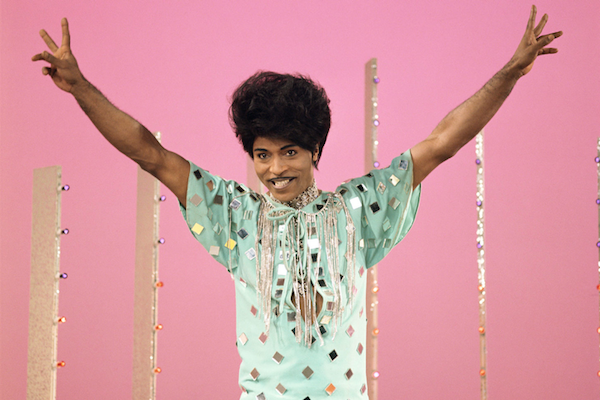Movie review by Greg Carlson
Richard Wayne Penniman, known to the world by his stage name Little Richard, died in 2020 from causes related to bone cancer. The popular music legend, often referred to as the “Architect of Rock and Roll,” pioneered sounds and styles that would be idolized and emulated by Otis Redding, Sam Cooke, James Brown, Bob Dylan, Tina Turner, John Lennon, Paul McCartney, Mick Jagger, Keith Richards, Michael Jackson, and Prince, to name a few. David Bowie said that he “heard God” when he listened to “Tutti Frutti.” The star would have loved “Little Richard: I Am Everything,” the feature documentary by Oscar-nominee Lisa Cortés. The filmmaker has put together an electrifying movie worthy of its subject.
“I Am Everything” premiered in January at the Sundance Film Festival and is currently available via the major streaming services. In the movie, Cortés masterfully presents the most significant dualities that defined Richard. Growing up in Macon, Georgia, Richard was exposed to the more reserved services of his mother’s Baptist congregation as well as the exuberant and highly participatory worship at the African Methodist Episcopal Church where his father was minister. Later, Richard would experience the racially biased discrimination and exploitation that would see white record labels taking the lion’s share of profits and Pat Boone charting “Tutti Frutti” higher than his own recording.
But the biggest doubling – at least for the mainstream audiences that would “tolerate” it as part of the singer’s flamboyant rock and roll package – manifests in Richard’s complex queerness. Richard would periodically renounce homosexuality to embrace the “godliness” of a faith-based Christian life, a source of frustration for generations of fans that Cortés addresses with great sensitivity and no candy coating. Richard’s ability to cross the “color line” in appealing to all races is astonishing in the context of his bold embrace of being openly gay in a time of fierce prejudice.
Cortés tracks this all without ever losing sight of Richard’s phenomenal talent and work ethic. The origin of the makeup and pompadour wigs as part of Richard’s image is linked to Billy Wright (who, along with Sister Rosetta Tharpe, was a key influence), but here is that polarity again: Richard claimed that straight white males in his audience, recognizing the singer’s lack of interest, wouldn’t feel threatened or take to worrying about their girlfriends. Too good to be true?
The wild story that in 1957 Richard mistook the rapidly moving light of Sputnik for some kind of apocalyptic fireball – causing him to discard his jewelry and pledge faithfulness to God right then and there – is included in the movie, serving as a gift-wrapped metaphor for the confusion that would contribute to the cycle of the singer’s swings between the less popular production of gospel records and the incendiary and profane rock songs preferred by the masses (some viewers will certainly blush when the meaning of the original “Tutti Frutti” lyrics are explicated). Self-hatred might be the easy answer for Richard’s back-and-forth career moves, but Cortés refuses to oversimplify or smooth out Richard’s devotion to each of these worlds. The result is a terrific biography.
